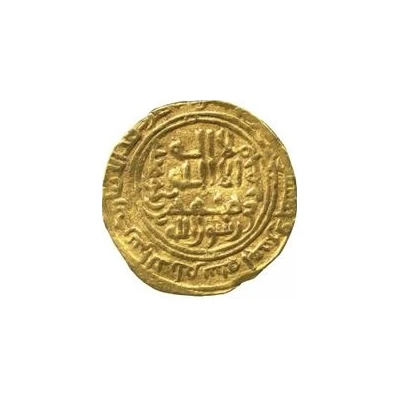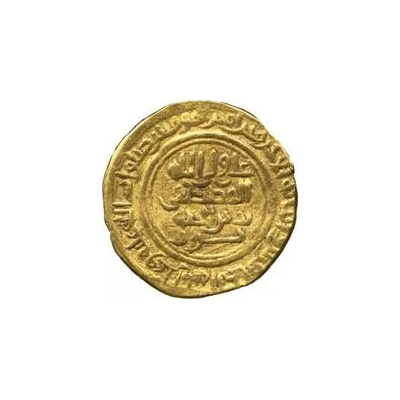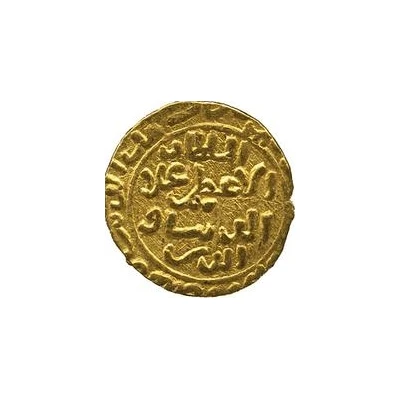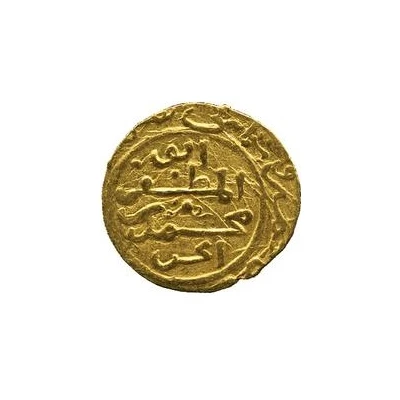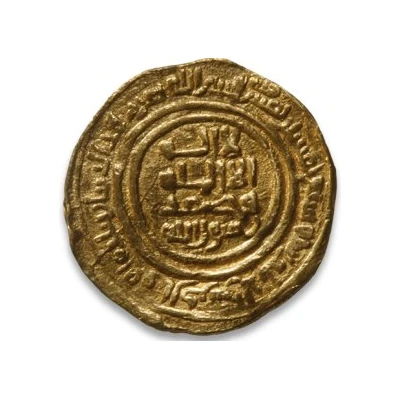
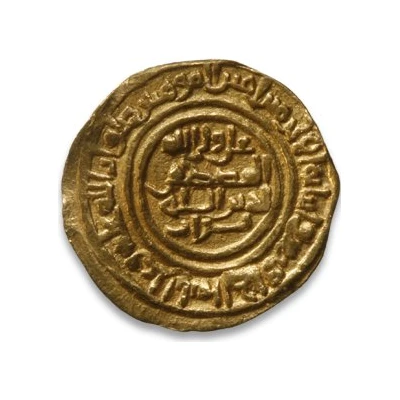

Fractional Dinar - al-Hasan II ND
| Gold | 1.80 g | 16 mm |
| Issuer | Alamut State (Greater Iran) |
|---|---|
| Imam | Hassan II 'Ala Dhikrihi's-Salam (1162-1166) |
| Type | Standard circulation coin |
| Years | 1162-1166 |
| Value | Fractional Dinar |
| Currency | Dinar (1090-1275) |
| Composition | Gold |
| Weight | 1.80 g |
| Diameter | 16 mm |
| Shape | Round (irregular) |
| Technique | Hammered |
| Demonetized | Yes |
| Updated | 2024-10-05 |
| Numista | N#81445 |
|---|---|
| Rarity index | 97% |
Reverse
Script: Arabic
Lettering:
Field:
'ali wali allah / al-mustafa / li-din allah / nizar
Margin:
amir al-mu’minin salawat allah ‘alayhi wa ‘ala aba’ihi al-tahirin wa abna’ihi al-akramin
Translation:
Field:
‘Ali is the chosen one of God, the Elect of Gods Faith, Nizar
Margin:
Commander of the Faithful, the blessings of God on him and his pure fathers and his most generous sons
Comment
Al-Hasan II’s coinage resembled that of his father, Muhammad I ibn Buzurg Ummid, but while Muhammad placed his name in the legends, al-Hasan II omitted his to help his subjects to distinguish his coins from those of his father.This fractional dinar bears the name and caliphal titles of the long-dead Fatimid Nizar, whose father al-Mustansir had chosen him as his heir. Then, shortly before al-Mustansir’s death in 487 H (1094 AD), the powerful vizier al-Afdal persuaded him to name his youngest son Ahmad, who was al-Afdal’s brother-in-law, as his heir.
After Ahmad acceded as the caliph al-Musta‘li, al-Afdal established a military dictatorship and confined the young ruler to his palace.
Nizar fled to Alexandria where he took the title al-Mustafa li-Din Allah. He then mounted an abortive revolt against al-Afdal, but was captured and murdered, probably on al-Afdal’s orders.
Some of Nizar’s followers broke away from the Fatimids, and later became famous as the Batinids or Assassins of Alamut in northern Iran. They were renowned for terrorizing their neighbours by sending out hit squads, allegedly high on hashish. The word “assassin” derives from the name hashishiyyun by which they were known.
In the later years of Muhammad I a movement developed among the younger Isma‘ils who refused to accept that the shar‘ia ritual law applied to them. They asserted that it was for the ignorant, or to keep the Sunnis in their place, and that they should not be subject to such petty restrictions.
Muhammad I was enraged to discover that his son al-Hasan was among their number, and had many of them put to death or exiled. After this al-Hasan kept quiet about his beliefs until Muhammad’s death, but when he came to the throne he prepared for reform. In Ramadan 559 (1164) Hasan announced a new concept called the qiyama, proclaiming that the Day of Resurrection was at hand, when all mankind would be judged. Shari‘a law was at an end.
From then on what mattered would be the life of the soul and the attainment of spiritual perfection, and the Ramadan fast was broken. Needless to say, the introduction of the qiyama caused dissent among those whose lives had been based on the moral purity of the shar‘ia, and al-Hasan II was murdered by one of these opponents in 561 (1166).
Interesting fact
One interesting fact about the Fractional Dinar - al-Hasan II ND (1162-1166) from Alamut State (Greater Iran) made of Gold weighing 1.80 g is that it was issued during the reign of Al-Hasan II, who was the fourth Imam of the Nizari Ismaili sect, and the ruler of the Alamut State, which was a state that existed in what is now modern-day Iran and Syria. The coin features an inscription in Arabic that reads "al-Hasan II, the Imam, the Commander of the Faithful" and on the reverse side, it features an inscription that reads "There is no god but Allah, Muhammad is the Messenger of Allah" which reflects the Islamic beliefs of the ruler and the people of the state. This coin is a rare and valuable piece of history that provides insight into the economic, political, and religious practices of the Alamut State during that time period.
